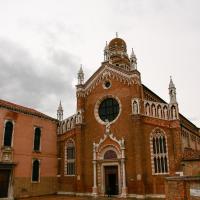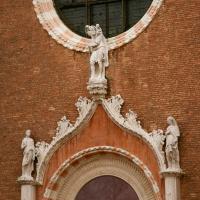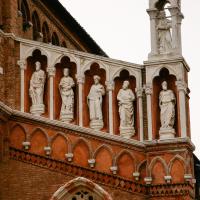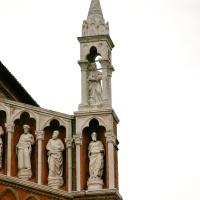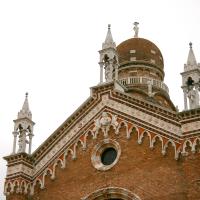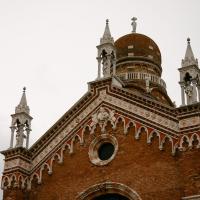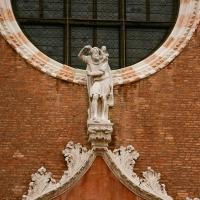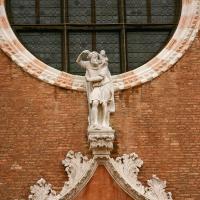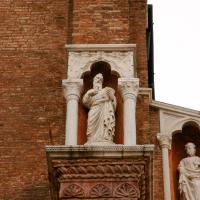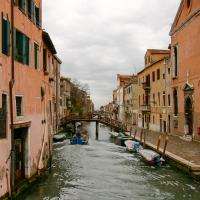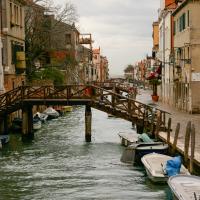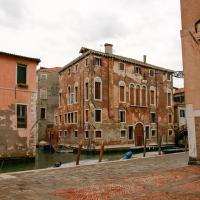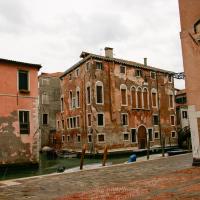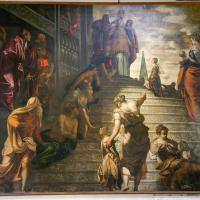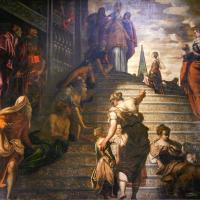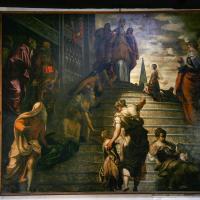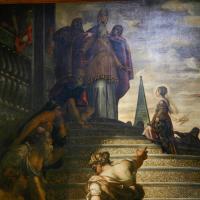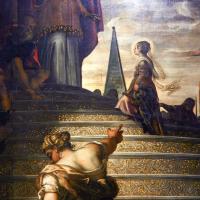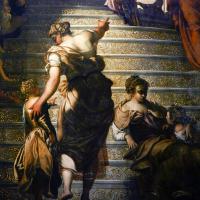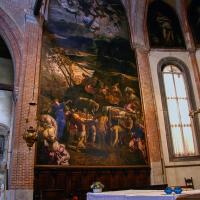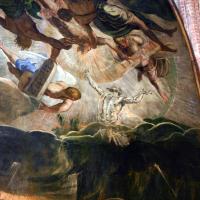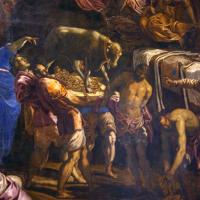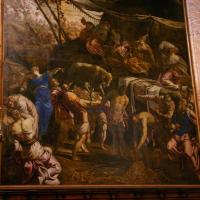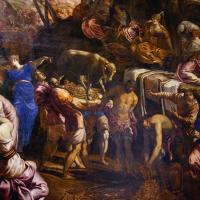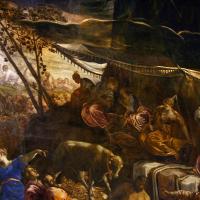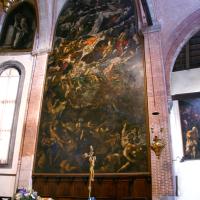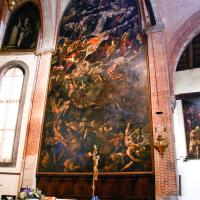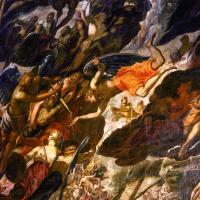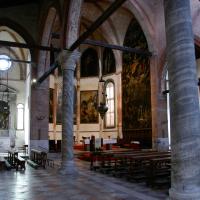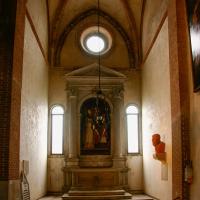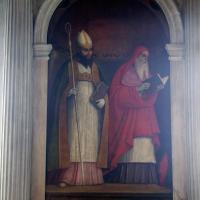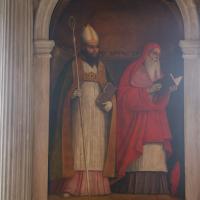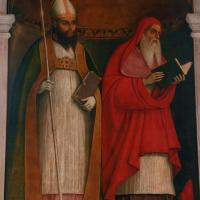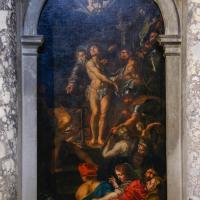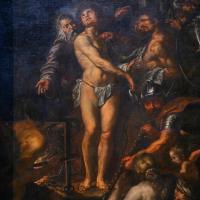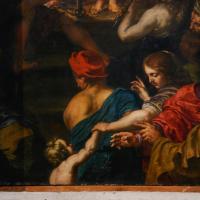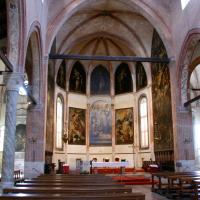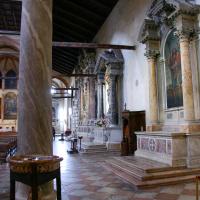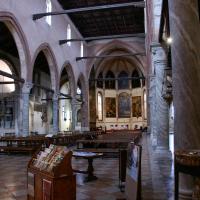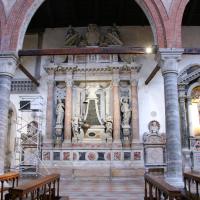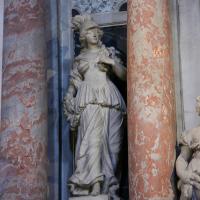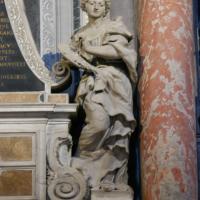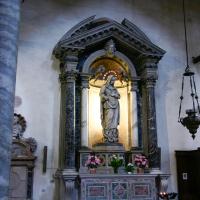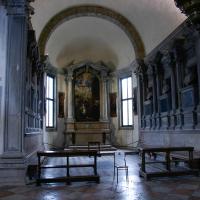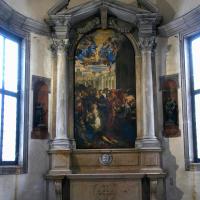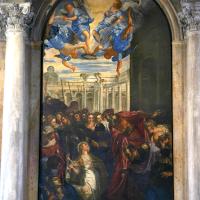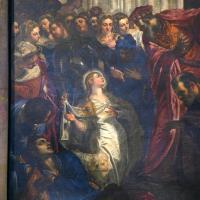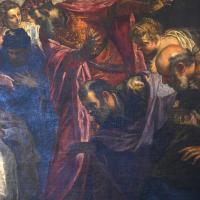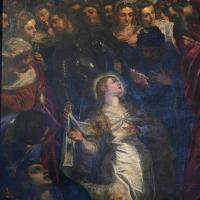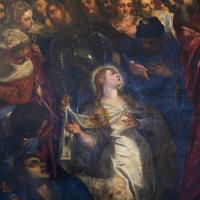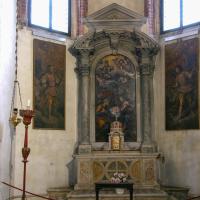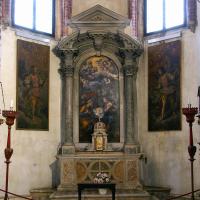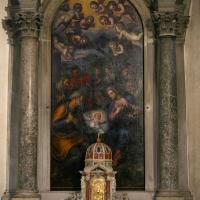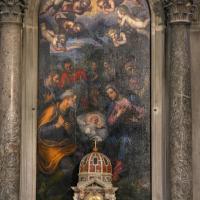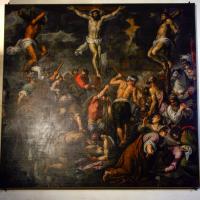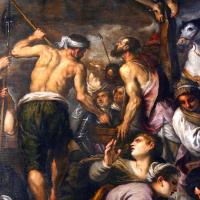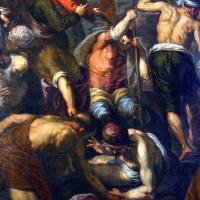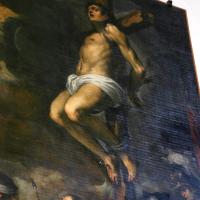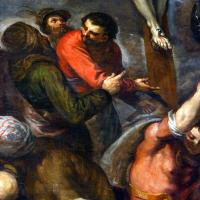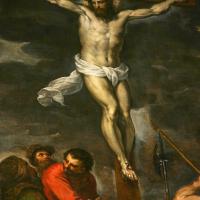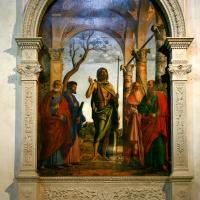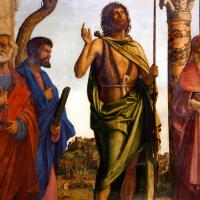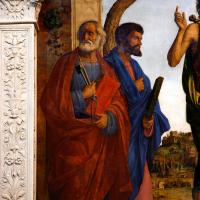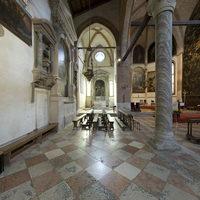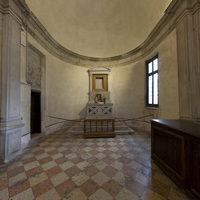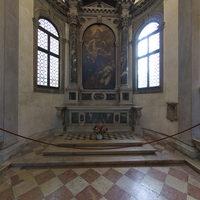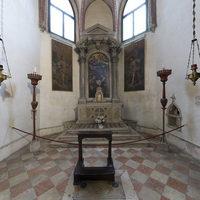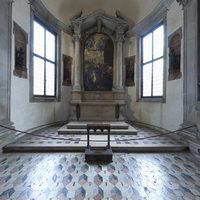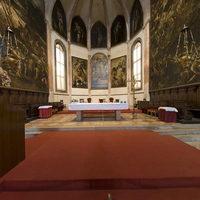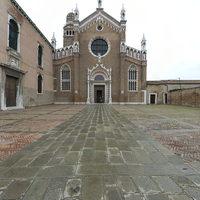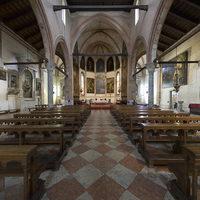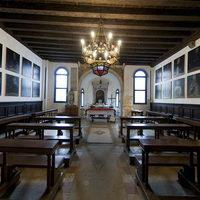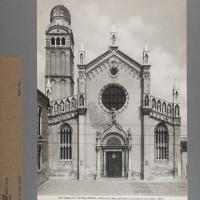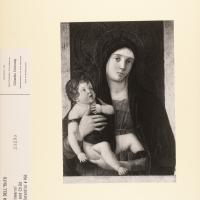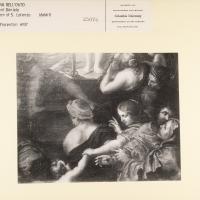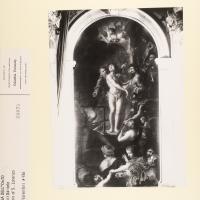Overview
A church and monastery were founded here around 1350 by the Umiliati (Humiliated) order and initially dedicated to Saint Christopher, the patron saint of the gondoliers. (Tiberio da Parma, the leader of the Order, and said to have been responsible for the original design of the church, is buried here.) During the building of the church an unfinished statue of the Madonna, made by Giovanni de Santis (but also said to have fallen from heaven) and kept in an orchard (orto) nearby, started getting a reputation for glowing and working miracles. The church bought the statue, with the intention of thereby increasing offerings towards the cost of building, and on 18th June 1377 it was placed on the high altar. Since then the church has been known as Madonna dell'Orto. Following a serious subsidence in the foundations at the North end of the church the order were given 200 ducats to rebuild. Reconstruction work from 1399 resulted in the complete redecoration of the interior and the construction of the new facade. A new and larger monastery was built at this time too. The Umiliati were expelled 1461 by the Council of Ten because of their licentious habits. The Canons of San Giorgio in Alga (also known as the Turchini because of their blue robes) replaced them, and the restoration work was finished in 1473. In 1669 Cistercians from San Tommaso on Torcello moved here, the Canons of San Giorgio having been suppressed by Pope Clement IX. In 1787, with only three monks living here, the Republic acquired the church and it was administered by the priest of San Marziale as an oratory. The church was allowed to crumble (being pressed into use as a stables, a hay and wine store and a powder magazine) until 1841 when some poor restoration (which included ripping up memorial stones, destroying the already damaged ceiling paintings, plastering over the facade and destroying the organ) was carried out. It closed in 1855, reopening in 1868 as a parish church. In 1931 the complex was given to the monks of San Giuseppini del Murialdo, who still administer it. More restoration work was carried out in 1912 and 1930-1931, but the great acqua alta of 1966 damaged the church further. Following this flood the church and its paintings were thoroughly restored by Venice in Peril between 1970 and 1980. It is also known as the Tintoretto church; the painter and many members of his family are buried here, and his two monumental works, “Worship of the Golden Calf" and the "Last Judgment" flank the high altar.
- Lorenzetti, Venice and Its Lagoon: Historical-Artistic Guide (Rome: Istituto Poligrafico dello Stato, 1961) as translated and with supplementary content by Taryn Marie Zarrillo, 2012/13

